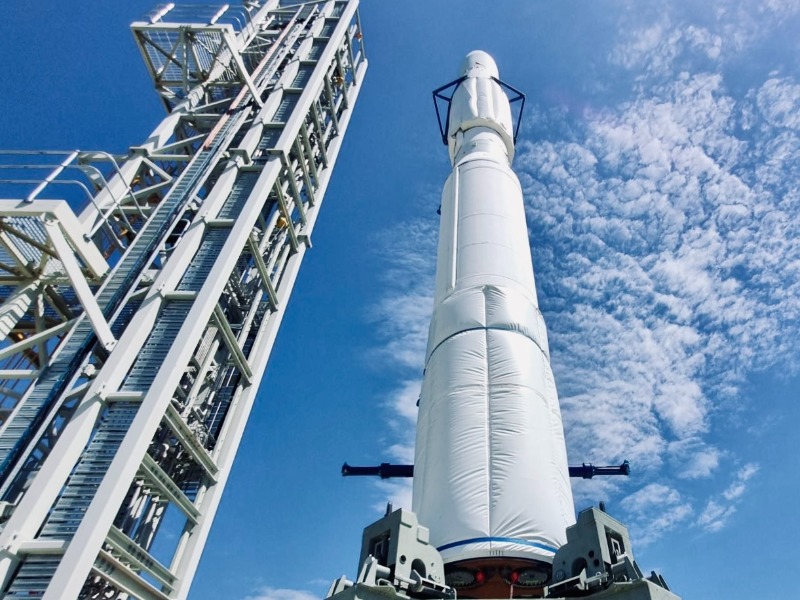Gilmour Space Technologies has successfully puts its Eris launch vehicle through a critical wet-test rehearsal, taking the orbital rocket to within ten seconds of launch.
As the company continues to wait on Australian Space Agency approval for a permit to launch the three-stage, Australian designed and manufactured rocket from its Bowen Orbital Spaceport in Queensland, the completed wet-test is a major and final milestone ahead of the Eris’ maiden flight.
The launch permit, which has been in process with the space agency for more than two years, is the final regulatory hurdle that Gilmour Space must clear before it can hit the ignition switch on the first ever Australian made rocket toward space.
During the test, which involved more than 40 Gilmour Space technicians, the Eris test rocket was safely loaded with propellants with all launch procedures executed up to T-10 seconds before lift-off.
Gilmour Space’ director of launch vehicles and satellites David Doyle – a former fast jet pilot with the RAAF – said he “cannot overstate the significance of what we have accomplished,” with the rehearsal uncovering only minor issues.

These issues, including two faulty valves and some minor software reconfigurations, are expected to be resolved before our first flight, pending launch permit approval and airspace management clearances from the relevant agencies.
The full rehearsal validated the performance of critical systems, Mr Doyle said.
“This was the final major test to validate the readiness of our rocket, ground systems and crew, while allowing us to address any concerns ahead of launch day,” he said.
“At this stage, we expect to resolve all identified issues in the coming weeks. Pending approvals and other unforeseen events, Eris should be ready for launch as soon as we get the green light.”
Update: Gilmour Space has completed a successful wet dress rehearsal for Eris #Testflight1, taking our Eris rocket from VAB to T-10 seconds before launch…
(Video snapshot: Stage 2 vernier testing) pic.twitter.com/98EITFtA4J— Gilmour Space (@GilmourSpace) September 30, 2024
As part of the launch vehicle test, all propellant tanks and pressure vessels across the three stages were successfully filled with fluids and high-pressure gases. Onboard autonomous tank pressure management systems were verified, and all 16 vernier thrusters were tested.
A vernier thruster is a small rocket motor used to make small directional and altitude changes to a spacecraft as it travels on its route to orbit.
The rehearsal also validated ground systems, including propellant storage, filling and de-tanking operations, with each performing as expected. Radio frequency communications with the launch vehicle were tested.
The range operations were also fully rehearsed. The rocket and ground systems were operated remotely from the Launch Control Centre, seven kilometres from the launch pad.
Airspace Temporary Restricted Areas were activated, and ground exclusion zones were maintained.
The company also operated 24 hour/7 day cycles were completed to ensure team readiness and system reliability, which included the team that will oversee the launch, as well as the back-up team.
A Gilmour Space spokesperson said the dress rehearsal took longer than an actual launch, with the crew taking a methodical, step by step approach.
Do you know more? Contact James Riley via Email.

